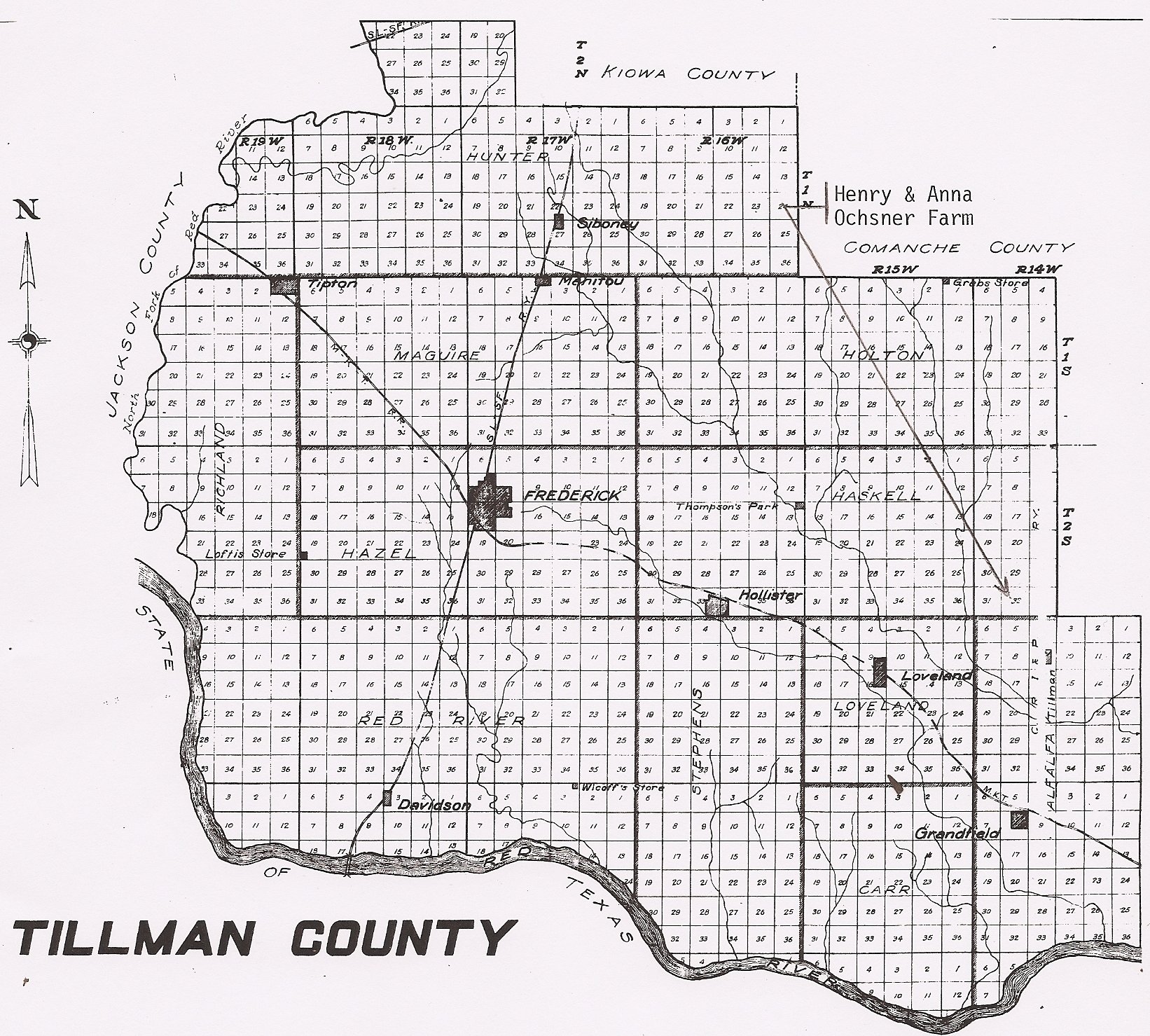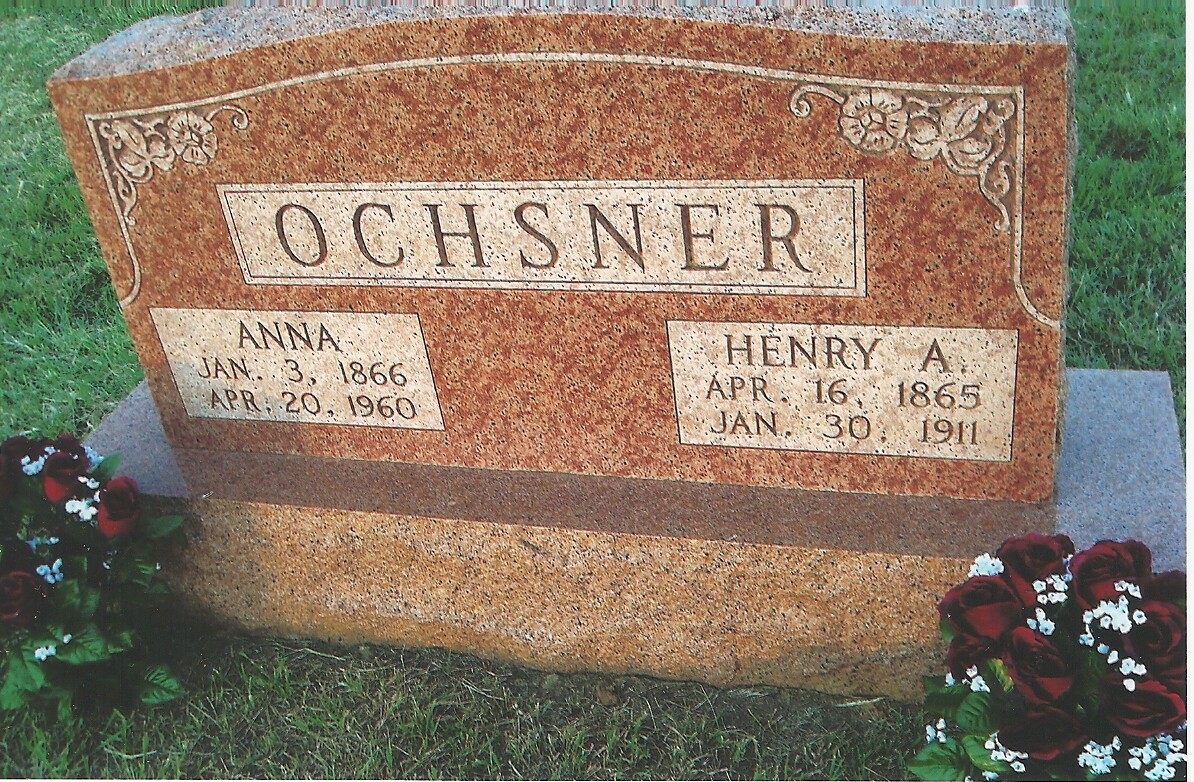Tillman County, OklahomaWhen President Theodore Roosevelt declared that the Big Pasture area of Oklahoma Territory would be opened in December 1906 for white settlement, word spread like wildfire. In anticipation of the opening, Henry, in early 1906, made a trip to Oklahoma to look over the land. He spent several days scouting for land suitable for farming and that had a source of water. Upon his return home, Henry filled out his bid form. He placed bids on twelve tracts of land. In accordance with the instructions, he enclosed a certified check for $325 - one-fifth of his highest bid on any one tract, which was $1,625. On Monday, December 17, 1906, the bids were opened, read, numbered, and recorded. The opening and recording of the bids took six weeks to complete. Over 100,000 separate bids had been made on approximately 1,830 quarters of land. Imagine Henry's excitement when he received notification that one of his bids had been accepted. He had been awarded Tract No. 1270, the Northeast Quarter of Section 32 in Township 2 South of Range 14, W.I.M, containing 160 acres. Tract No. 1270 was located in Tillman County, one mile west and five miles south of Chattanooga. Form of Bid for Oklahoma Pasture Lands
Submitted by Henry Ochsner, December 5, 1906 
Henry and Anna Ochsner collection
Tillman County, Oklahoma
The Ochsner farm is near the eastern edge of the county. 
Henry and Anna Ochsner collection
Upon receiving this good news, Henry closed out his affairs in Illinois, loaded up his family, which included his wife and four children, ages 14, 10, 8, and 6, and moved to Oklahoma by train. On March 30, 1907, Henry went to the United States Land Office in Lawton and filed his Homestead Affidavit, including with it a copy of the Declaration of Intention to become a U.S. citizen he had filed in 1898. The Department of the Interior awarded Henry ownership of his farm on April 2, 1907. The $325 deposit made with the bid submission was applied as the first payment. After working fifteen years as a laborer for a brewing company and as a dairyman, Henry is now the first time owner of a piece of choice land in the Big Pasture area of Oklahoma. Turning this field of prairie grass into a crop producing farm would require plenty of hard work. But Henry and Anna were not afraid of work, so with zeal and determination they set about to make a success of their Oklahoma farm. After four years of living in Oklahoma, the Ochsner family was enjoying the fruits of their hard labor. The little farm house Henry built for his family was warm and comfortable. Their daughter, Annie, 18, was married, and their three boys - Rudy, 14, Charlie, 12, and Hankie, 10 - were in school. Everyone was busy with tending to the crops and animals and all that went with farm life. Toward the end of January 1911, however, Henry became desperately ill with appendicitis. A doctor came from Grandfield to perform surgery, with the patient laying on the kitchen table. But, it was too late, for the appendix had already ruptured. Henry died on January 30, 1911 at the age of 45. At the time of Henry's death, the farm had a $2,000 mortgage on it. Over the next two years, Anna had to take out an additional $2,200 in mortgages to keep the farm operating. Nevertheless, Anna and her three boys were committed to keeping the family farm. Through much hard work and sacrifice, they managed to pay off all of their debts by 1915. In 1930, Anna moved into a large two-story house in Chattanooga purchased by her sons. In turn, her son Charlie took over the farm. Through a mutual arrangement among all four children, Charlie became the sole owner of the family farm in exchange for his promise to care for Anna for the rest of her life. She died in Grandfield on April 20, 1960, at the age of 94. Henry and Anna's tombstone in the Chattanooga Cemetery

Henry and Anna Ochsner collection
Charlie and his wife, Crystal, owned and lived on the farm until 1974, when they retired and moved to Chattanooga. Their youngest son, Arthur, then moved back to the farm and worked it for his parents. Charlie died in 1992 at age 93, and Crystal died in 2003 at age 98. Upon his mother's death, Arthur inherited the farm. It is his home to this day.
|